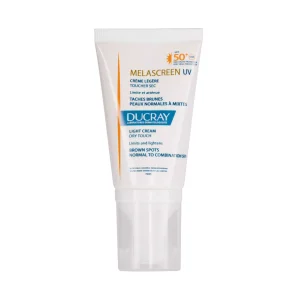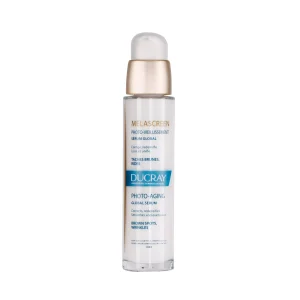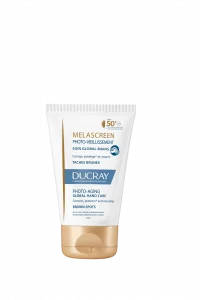
When your skin starts to show signs of pigmentation, it may be a real bummer. If the condition persists and spreads, it can affect your confidence and social life. That’s why we’re here to help. The Dermo Lab has reached out to the dermatologist Dr. Samy Younis to help you find the right treatment to achieve quick and effective pigment reduction.
What is the difference between melasma and pigmentation?
Excessive skin pigmentation is the result of abnormal melanin production by melanocytes. Melanocytes are pigment-producing cells. The number of melanocytes present in our skin determines our skin color. Melanin production depends on UV or sun exposure and is a natural protective mechanism for the skin.
According to Dr. Samy Younis, hyperpigmentation is a common skin condition in which areas of skin are darker than the surrounding skin. Hyperpigmentation is characterized by many types of discoloration, including sun spots, inflammation, and acne scars.
On the other hand, Dr. Samy Younis indicates that melasma is a form of hyperpigmentation triggered by UV exposure and hormonal influences. It usually affects women more than men. Melasma can affect all skin types, but it is more common in darker-skinned people, including Asians, Latinos, Middle Easterners, Mediterraneans, and Africans, as well as in people with a family history of melasma. Melasma can be superficial, deep, and mixed.
What causes pigmentation on the face?
The cause of hyperpigmentation depends on its type. The most common causes are:
1- Sun exposure
The body produces more melanin to protect the skin from prolonged sun exposure. This can lead to dark spots or patches on the skin called age spots or sun spots. Dr. Samy Younis states that the sun is the main culprit in pigmentation. Therefore, the more sun exposure, the higher the risk of skin pigmentation.
2- Inflammation of the skin
Some areas of the skin may become darker after skin inflammation. This could be acne, eczema, lupus, or a skin injury. People with darker skin are more susceptible to developing post-inflammatory hyperpigmentation.
3- Hormones
Darker skin patches can form when people undergo hormonal changes. This type of hyperpigmentation is frequent during pregnancy. The cause may be hormonal, as in the case of melasma or chloasma.
4- Drug reactions
Some medications, such as antimalarials and tricyclic antidepressants, can cause hyperpigmentation. In these cases, patches of skin may turn gray. Chemicals in topical treatments can also cause hyperpigmentation.
5- Medical conditions
Some more serious causes of hyperpigmentation include Addison’s disease and hemochromatosis.
Addison’s disease affects the adrenal glands. It can produce hyperpigmentation in certain areas of the body, including:
- skin folds
- lips
- elbows and knees
- joints
- toes
- inside of the cheeks
Hemochromatosis is a hereditary disease that causes an excess of iron in the body. It can cause hyperpigmentation, which gives the skin a darker or tanned appearance. Hyperpigmentation can occur when iron levels are five times higher than normal.
What are the types of unwanted pigmentation?
Skin pigmentation can be classified into three categories:
- Epidermal (superficial) pigmentation – these types of pigmentation are usually close to the surface of the skin and are induced by sun exposure. They include solar lentigos, freckles, and café au lait macules.
- Dermal (deep) pigmentation – these types of pigmentation are usually found in the dermal layers and include Hori’s macules and nevus of Ota.
- Mixed dermal/epidermal pigmentation – these types of pigmentation are found in both the superficial and deep layers of the skin. Melasma is an example.
How to get rid of pigmentation on the face quickly?
It is important to note that prevention of pigmentation is much easier than treatment of pigmentation.
UV exposure from the sun or sunbeds aggravates any existing pigmentation and promotes the appearance of other pigmentation. The risk of skin cancer also increases with UV exposure.
Thus, according to Dr. Samy Younis, the most important way to deal with unwanted pigment is to use sunscreen with a high protection factor (SPF 50) at least 20 to 30 minutes before going out and reapply it every two hours. In addition, the sunscreen should provide both UVA and UVB protection. He also recommends avoiding sunbathing and direct sun exposure as much as possible, especially between 10 a.m. and 3 p.m.
Sunscreen should be applied every day, even on cloudy or overcast days, because UV rays are always present. We recommend sunscreens with high SPF levels, like the one below.
Ducray Melascreen UV Light Cream SPF50+
Second, topical brightening agents can be used in conjunction with sunscreen to help reduce skin pigmentation. Topical brightening agents help reduce pigmentation by inhibiting the enzymes that produce melanin (skin pigment) and increasing skin turnover to minimize existing pigmentation. Dr. Samy Younis recommends the following agents:
- Azelaic acid
- Retinoid
- Hydroquinone
- Vitamin C
- Kligman cream
But be careful to check with your dermatologist first!
Dr. Samy Younis explains that retinol and vitamin C are both found in many beauty products, but they work differently on your skin.
- Retinol is derived from vitamin A and is used topically at night because it is photosensitive. It accelerates cell turnover and causes a slight peeling of the skin, which leads to collagen growth, rejuvenation, and even skin tone.
- On the other hand, vitamin C is a very good antioxidant that is available topically, mainly in serum form, with a different concentration that tends to focus on collagen synthesis and skin tone.
We recommend Ducray Melascreen Depigmenting Intensive Care which is enriched with azelaic acid and glycolic acid. This cream corrects and reduces localized hyperpigmentation.
Ducray Melascreen Depigmenting Intensive Care
What is the treatment for age-related skin pigmentation?
According to Dr. Samy Younis, age spots are very common in adults over 50, but younger people can get them if they spend a lot of time in the sun. They are very common in fair-skinned people.
Dr. Samy Younis explains that these age spots can be reduced or prevented through sun protection by applying a broad-spectrum sunscreen with a high protection factor (50 or higher), to be used 30 minutes before going out and every two hours once outside.
Topical treatment such as retinol cream or hydroquinone may be effective. Skin resurfacing with laser or chemical peel to remove superficial layers of skin is another effective pigmentation treatment. Finally, cryosurgery can also be used.
The following products are specifically designed to treat signs of aging such as brown spots, wrinkles, and fine lines, leaving the complexion even, smooth, and rejuvenated.
Ducray Melascreen Photo-Aging Global Serum
Ducray Melascreen Photo-Aging Night Cream
Ducray Melascreen Photo-Aging Global Hand Care
Last Updated on February 16, 2024














